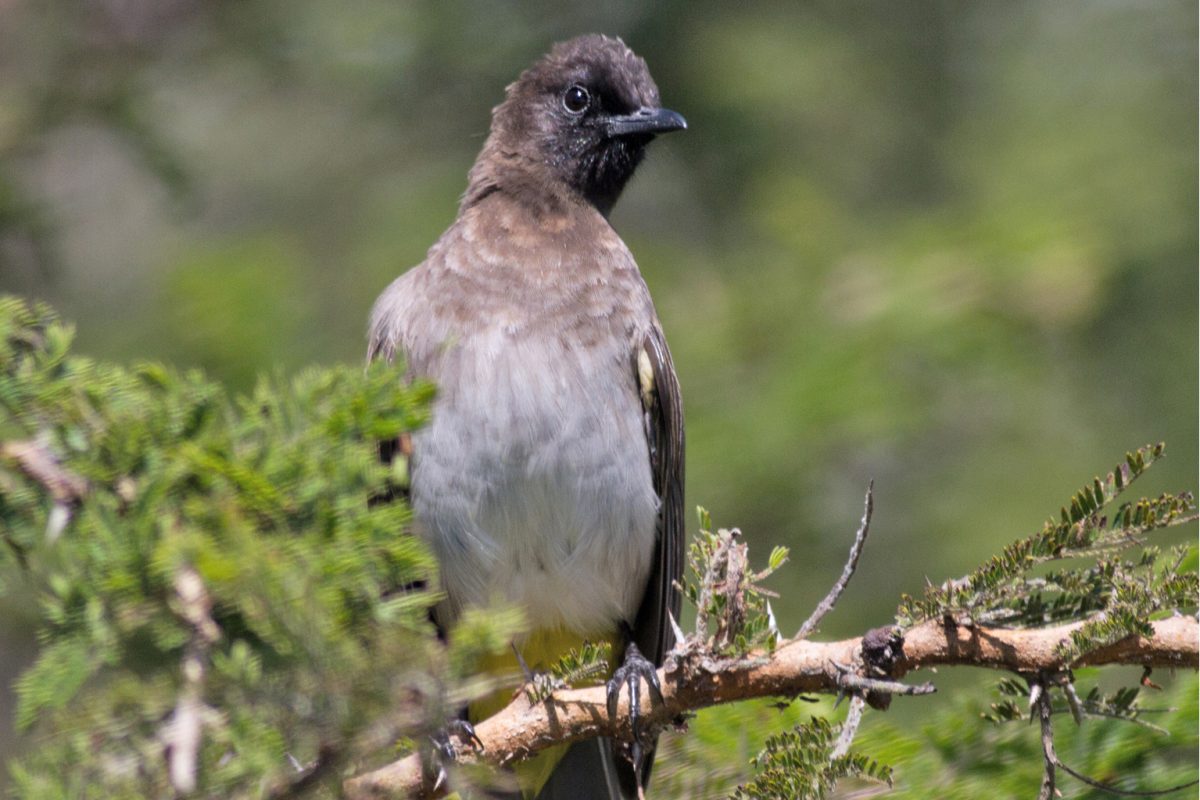Once again, we are confined to camp because of the weather. It has rained almost everyday for around 2 weeks now; the rivers are high and many of the tracks in the Mara impassable. Even our small river that marks the boundary with the park is, at the moment, a raging torrent. I can even hear the rush of the Sand River which is 5km from our camp. So, this week I am going to write about the animals closer to home, in the camp and surrounding area.
But first a bit of sad news reached us this week. Olarishani, one of the male cheetahs from the Talek area that was part of a coalition has died. They were known originally as Tano Bora, the magnificent five, however one of the boys left, then was later killed by the others when he tried to return, so they were then Nne Bora, now this one was killed when trying to cross the Talek river. The river was high and as he crossed, a crocodile hiding in the water snatched him. These photos were taken when there were five of them, having taken down a Topi, and then when there were four on the hunt again. I will try to catch up with the remaining three on my next game drive. Hopefully next week.


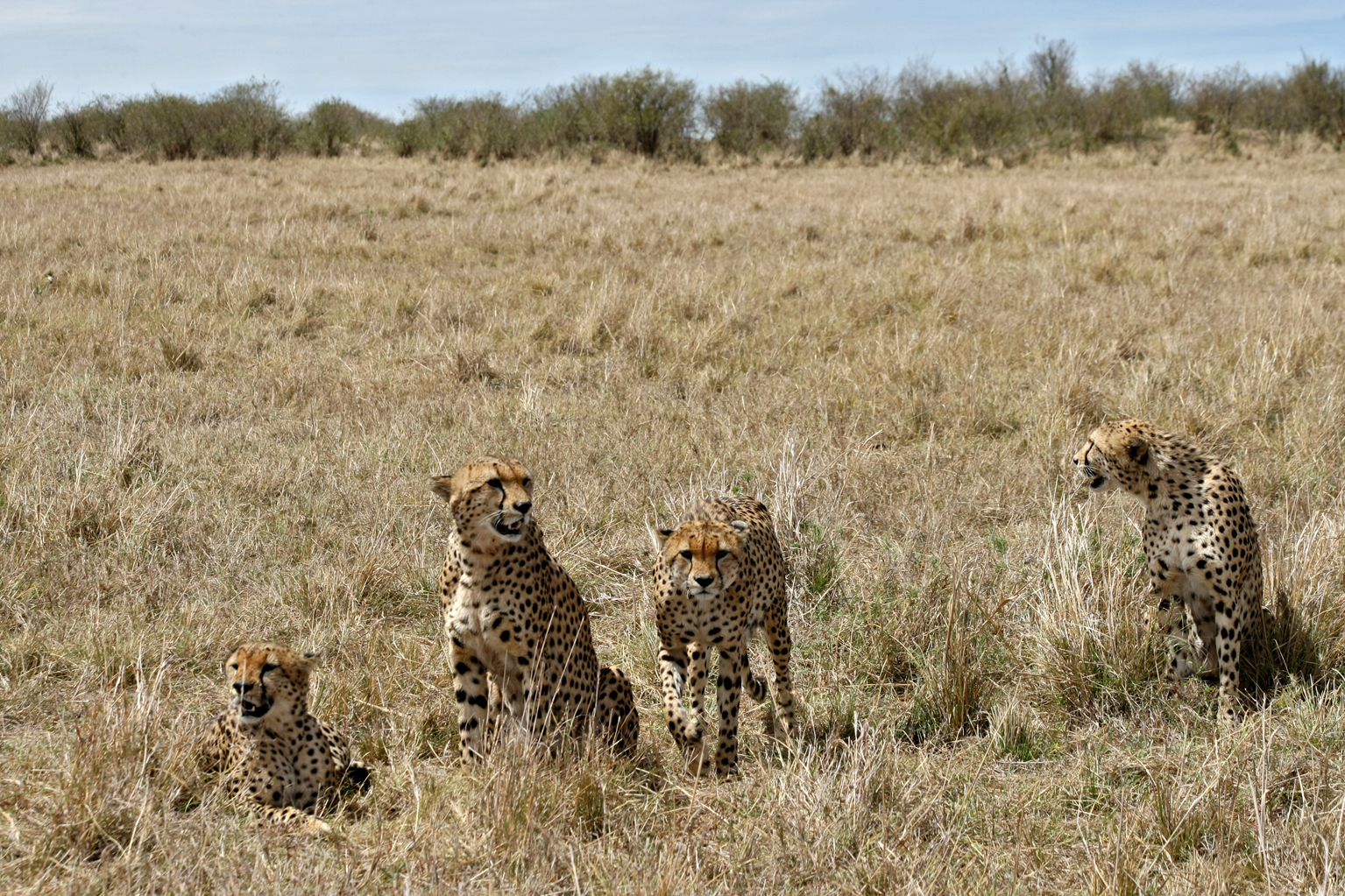
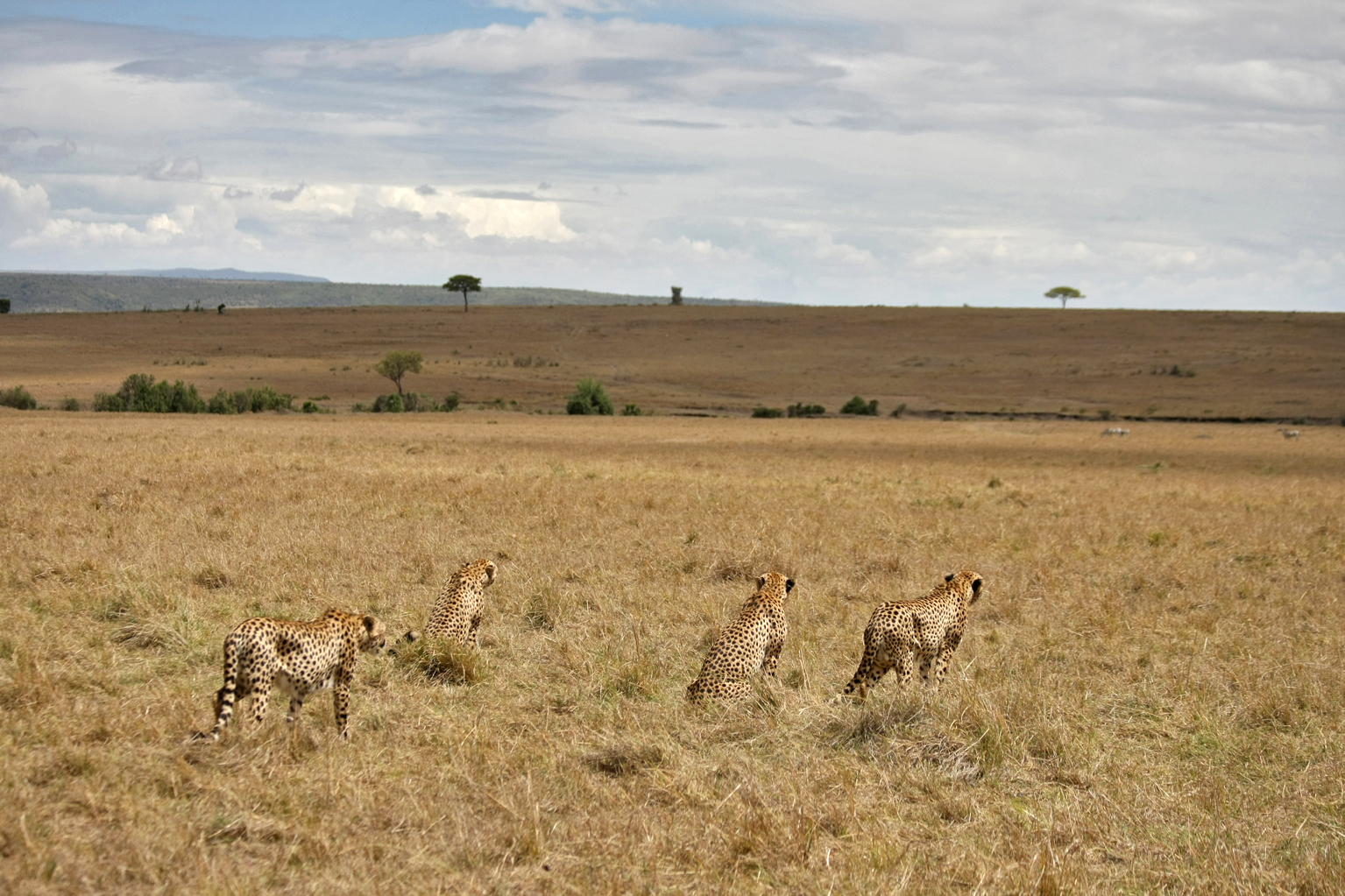
Some good news though, we have heard that Roho the young Leopard that lost his mother is doing well and hunting for himself.
So, this morning I rise early, put some bread in the bird tables outside our house then sit on the veranda, wrapped in a shuka, with a hot cup of tea to keep warm, and wait for the birds to come. What at first sounds like a constant background noise, when I really listen, I can make out the individual sounds of at least 10 different birds.
It’s not long before the birds start to arrive, first in are the Bulbul, he is easy to recognize because his feathers tend to stick up a little on the top of his head. Then the weaver, two types arrive this morning, the red headed weaver and the more common yellow one. After this the plain old black bird and a few others that I don’t know the names of. The barbet I easily recognize as he is speckled, slightly bigger than the others and he is also quite aggressive, when he is on the bird table, he chases all others away.

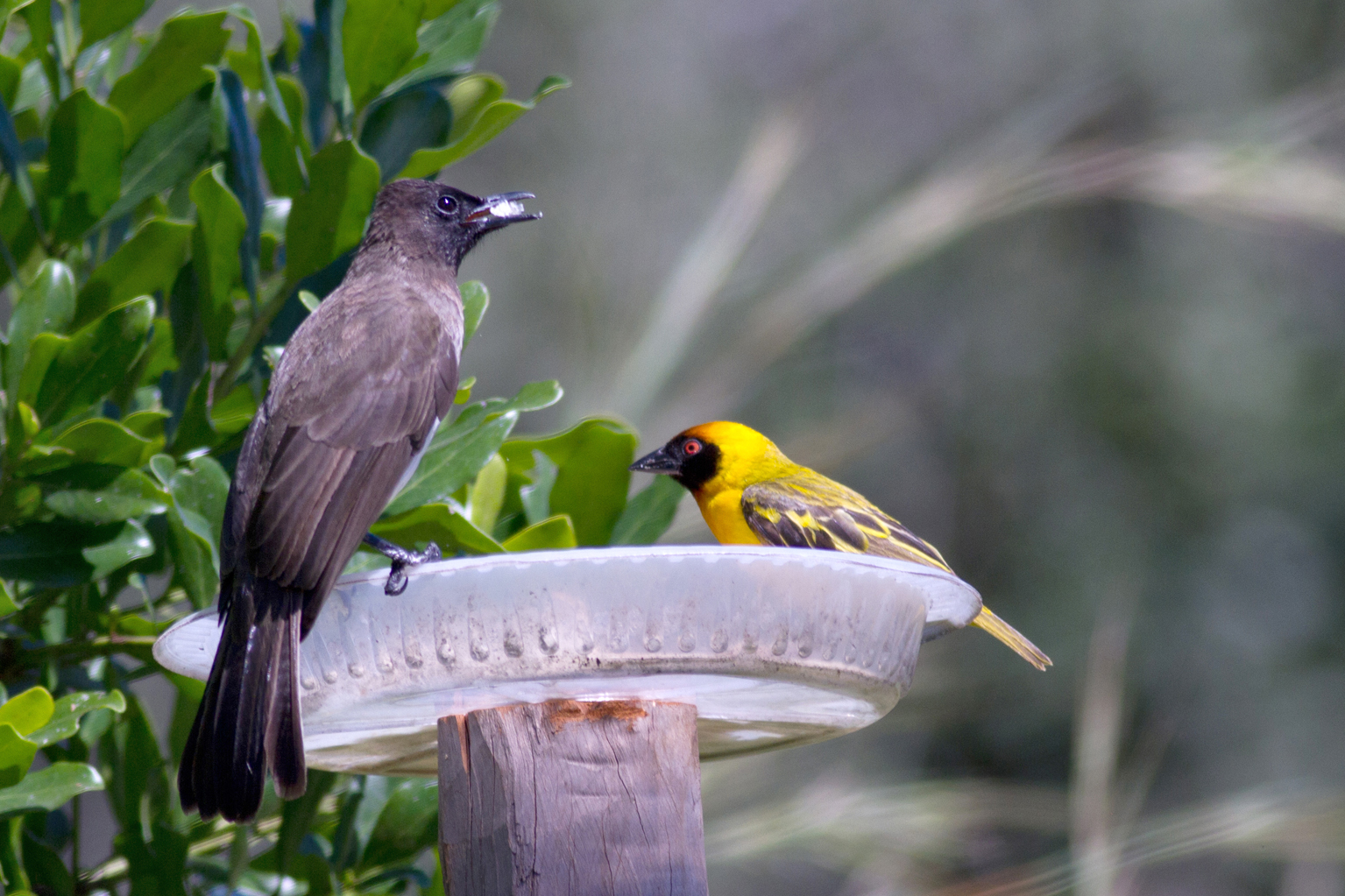








The sparrows are the smallest that come to the table, two of them flew in together, I think it might have been a mother with a young one, although they looked about the same size, one started feeding the other, it was very touching. The sparrows are also quite bold as we get them flying into the dining area when the guests have left for their game drive, they come to the tables and pick at the crumbs. We usually allow them to do this before going in to clean. Not too much bigger is the grenadier with its bright red beak and eyes surrounded by blue rings and a russet coloured head.
Three other birds that arrived and perched in the trees next to the table are the starling and two different species of sunbird, these three are very colourful. The starling has a bright blue back and chest with a bright red eye, the scarlet chested sunbird is completely black apart from a bright scarlet patch on his chest as the name suggests, but the most vividly colourful is the other sunbird with an iridescent blue and purple on the head and chest and a bright yellow underside, absolutely captivating. I nearly forgot the little bee eater; he is also nice and colourful with a green back and yellow front.




Finally, to the table comes a small scruffy looking widowbird, he doesn’t stay but picks a large piece of bread and flies away with it. The funniest looking of the birds this morning was the mousebird, he is very furry with a sort of Mohican hair style, big eyes, and a very long tail. He is a devil because he often flies into our shamba and eats the herbs and other vegetables we have growing there.


Most mornings the Dove, or what I call the pigeon comes in, they walk straight on to the veranda to drink water from the dog’s bowl, interestingly the dogs are not bothered by this. What does bother the dogs though are the Hyena. This morning, while still dark, before I had even put the bread out for the birds the dogs ran, barking and howling, to the edge of the clearing, looking into the bush. I shone my torch and stared into the bush and two luminous eyes stared back at me. It was a Hyena, I could just make out the outline of his body at the edge of the bush. Hyena are not afraid of dogs and my dogs were sensible enough not to get too close to the Hyena. After a few minutes he walked off.
Other animals we sometimes get around the house are Zebra, generally at night, the dogs do chase these when they come to close to the house, and also the occasional elephant. When this happens, the dogs keep their distance and stay very quiet. The elephants, as well as the mousebird, like to go into our shamba and eat the newly grown vegetables, they are particularly fond of cucumber.
Later in the day while walking along the riverbank to see what, if any damage the heavy rains had done, I came across this monitor lizard, immediately he saw me he made for the water and disappeared. It is quite rare to see the monitor lizard around the camp, this one must have been at least three feet long from head to tail.

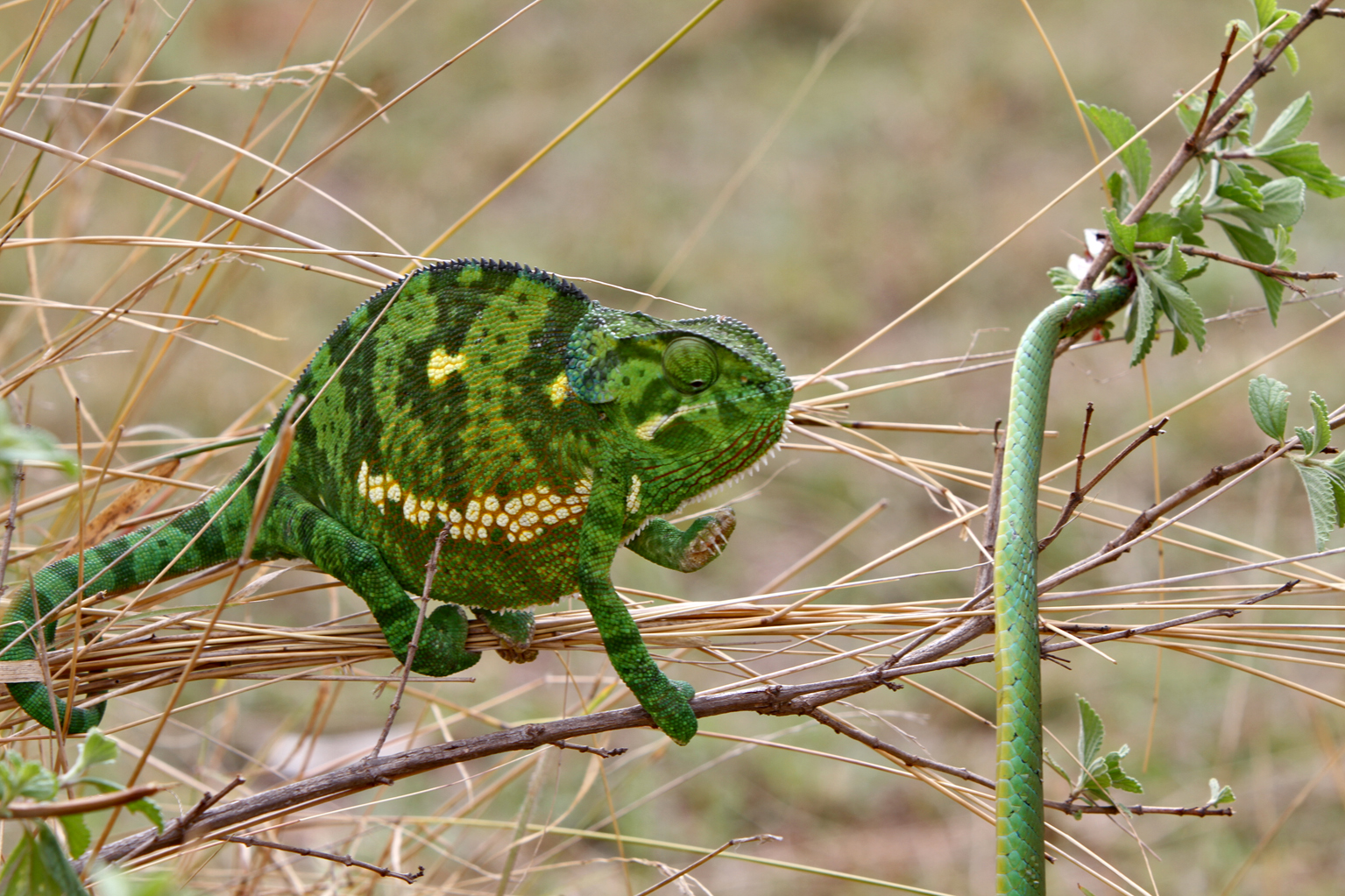

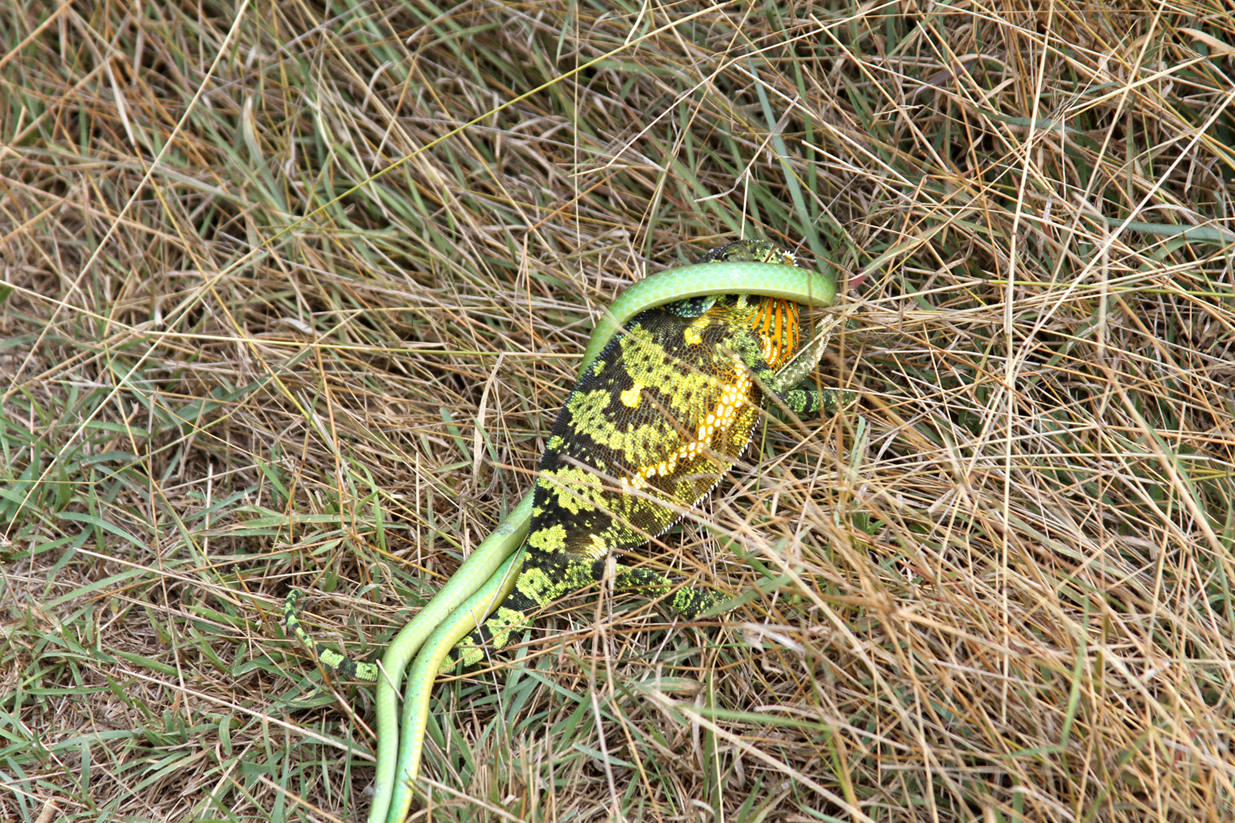
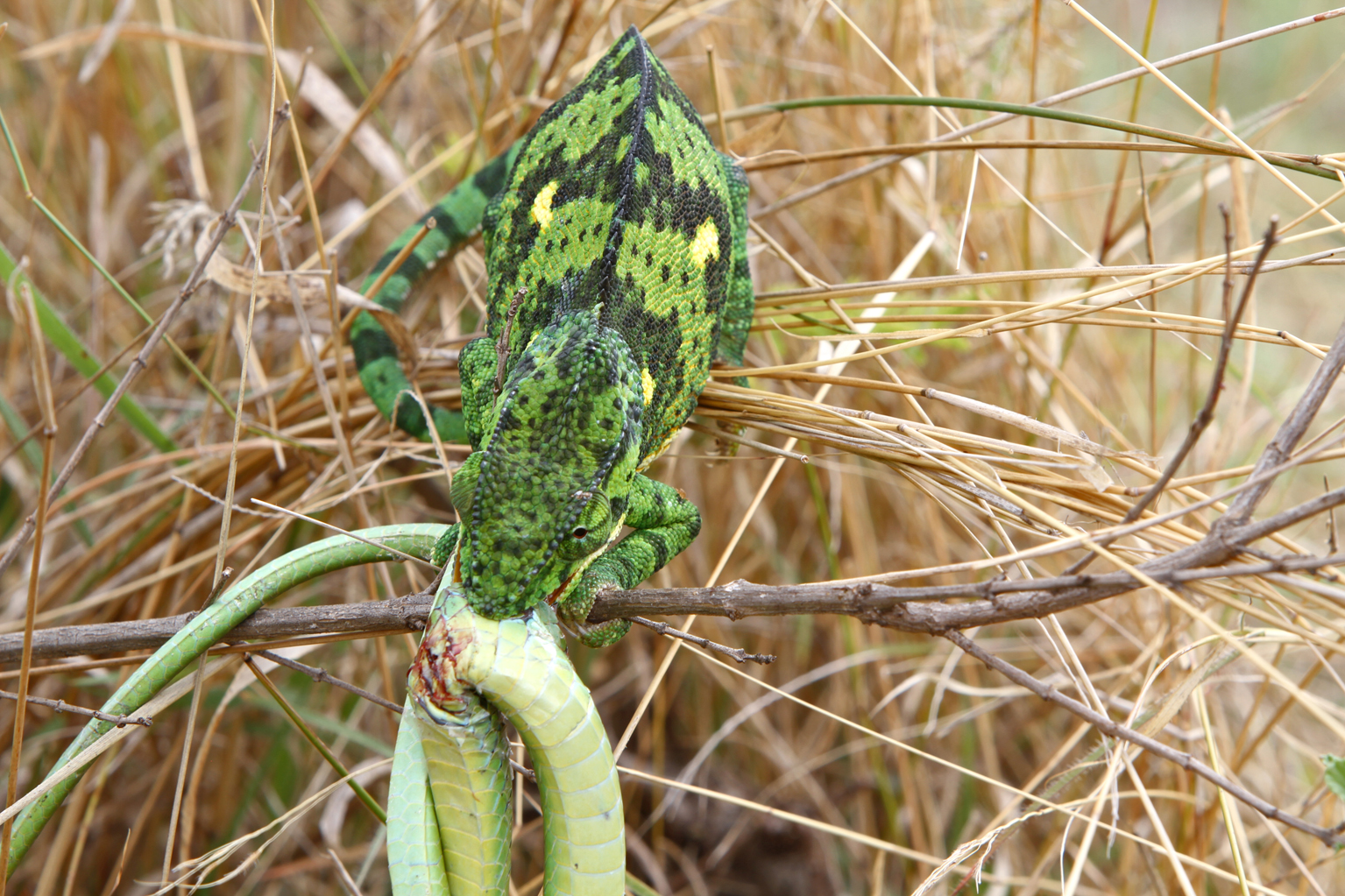
Another animal that we don’t often see is the chameleon, Ken managed to capture this one as it wrestled with a snake. First, they faced each other off, this was a slow process as the chameleon moves very slowly, one limb at a time. The snake clearly wasn’t afraid of the chameleon because at one point it wrapped itself around him, but I think it should have been because the chameleon took a chunk out of him. Chameleons don’t eat snakes, they eat only insects, but obviously they don’t like snakes, maybe they see them as a threat, which suits the Maasai as they don’t like snakes either.

